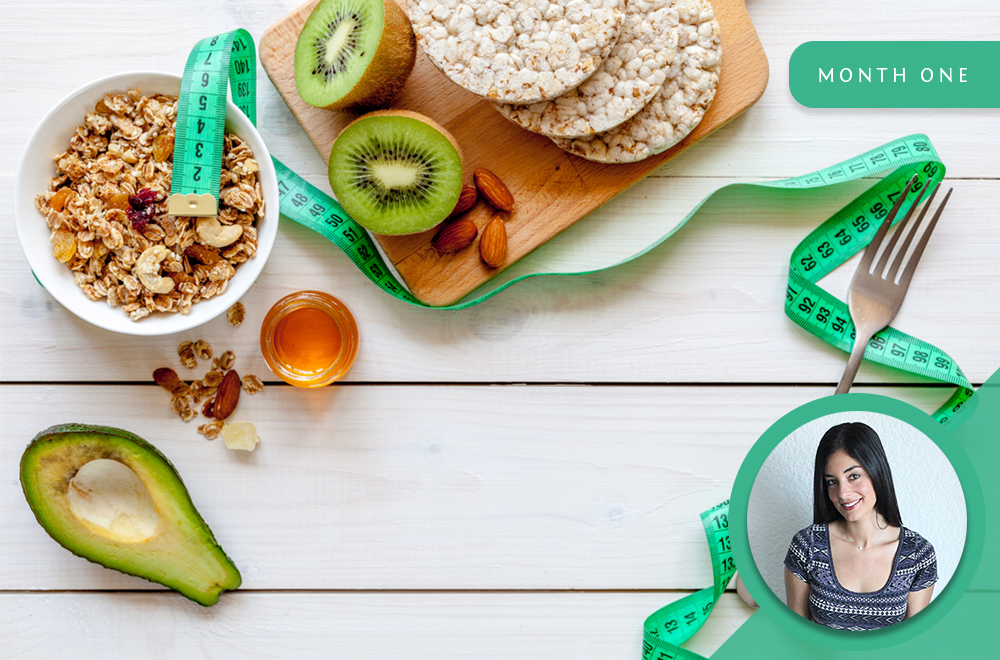
13 Jul Pregnancy: Month 1: What Our Dietitian Has To Say
Many women don’t realize that they are pregnant until week 4-6 of their pregnancy so the first month of pregnancy can be pretty uneventful and can even go completely unnoticed. In the first month of pregnancy you may experience tender breasts, fatigue and some appetite changes such as nausea or food aversions but will generally not experience any major changes until the second month of pregnancy. Since your appetite will be mostly intact this is a great time to optimize your nutrient intake. This is also a time of critical development for the foetus and getting in enough of the right nutrients in the first few weeks of pregnancy can play a vital role in preventing pregnancy related complications and foetal abnormalities later on.
One of the most critical nutrients during the first few weeks of pregnancy is folate. Folate is part of the family of B-vitamins and can be found in most fruits and vegetables in varying amounts. In fact, it was named folate after the word “foliage” which refers to the leaves of plants. Inadequate folate intake during pregnancy (especially in the first month after conception) can lead to neural tube defects in the foetus. Neural tube defects are malformations in the spine and brain of the baby and cause conditions such as spina bifida and anencephaly. Luckily, 70% of neural tube defects are preventable by simply consuming enough folate during the early phases of pregnancy. Since you may not know you are pregnant until 4-6 weeks after conception, it’s a good idea to start focusing on your folate intake before you start trying to conceive and continue getting in enough folate throughout your pregnancy. The recommended folate intake during pregnancy is 600mcg/ day. Aim to get at least 200mcg of folate per day from your diet, in addition to 400mcg/ day from a folate supplement.
Beans, greens and fortified grain products are generally the best sources of folate. A ¾ cup serving of cooked beans usually provides 150-260mcg of folate (depending on the variety of bean). Greens such as spinach, broccoli, lettuce and kale usually provide 60-80mcg of folate per 1 cup raw serving. Fortified grain products such as breakfast cereals, breads and mielie meal usually have between 40-190mcg of folate per serving. Of the fruit family, oranges and avocadoes have the highest folate content, providing 40mcg folate per orange and 160mcg folate per avocado.
MY TOP TIPS FOR GETTING ENOUGH FOLATE:
- Eat a balanced diet with plenty of vegetables, fruits, legumes and whole-grains.
- Make sure to add a serving of beans or legumes to your daily diet. This will add tons of high-quality plant protein, iron and fibre and will make sure that you meet most of your daily needs for folate. Try this simple butterbean dip which makes for a great topping to crackers or veggies.
- Have at least 1 serving per day of leafy greens to make up the remainder of your folate intake. This can be achieved by simply eating a leafy salad or by adding some greens to your morning smoothie.
- If you are struggling to eat your greens and beans due to food aversions or nausea, focus on eating more oranges, orange juice, avocado and fortified grain products.
- Smoothies are a great way to get lots of nutrients in when you are not up to eating. Try making a smoothie with orange, pineapple juice, baby spinach and avocado. You could meet your daily folate requirements in just 1 glass.



Pingback:Finding out | Month 1 - Faithful to Nature Natural and Organic Blog
Posted at 19:26h, 13 September[…] Pregnancy: Month 1: What Our Dietitian Has To Say… […]
Pingback:The First Month is Crazy - Faithful to Nature Natural and Organic Blog
Posted at 19:32h, 13 September[…] Pregnancy: Month 1: What Our Dietitian Has To Say… […]
Pingback:Month 1: Finding Out I Was Pregnant - Faithful to Nature Natural and Organic Blog
Posted at 19:33h, 13 September[…] Pregnancy: Month 1: What Our Dietitian Has To Say… […]